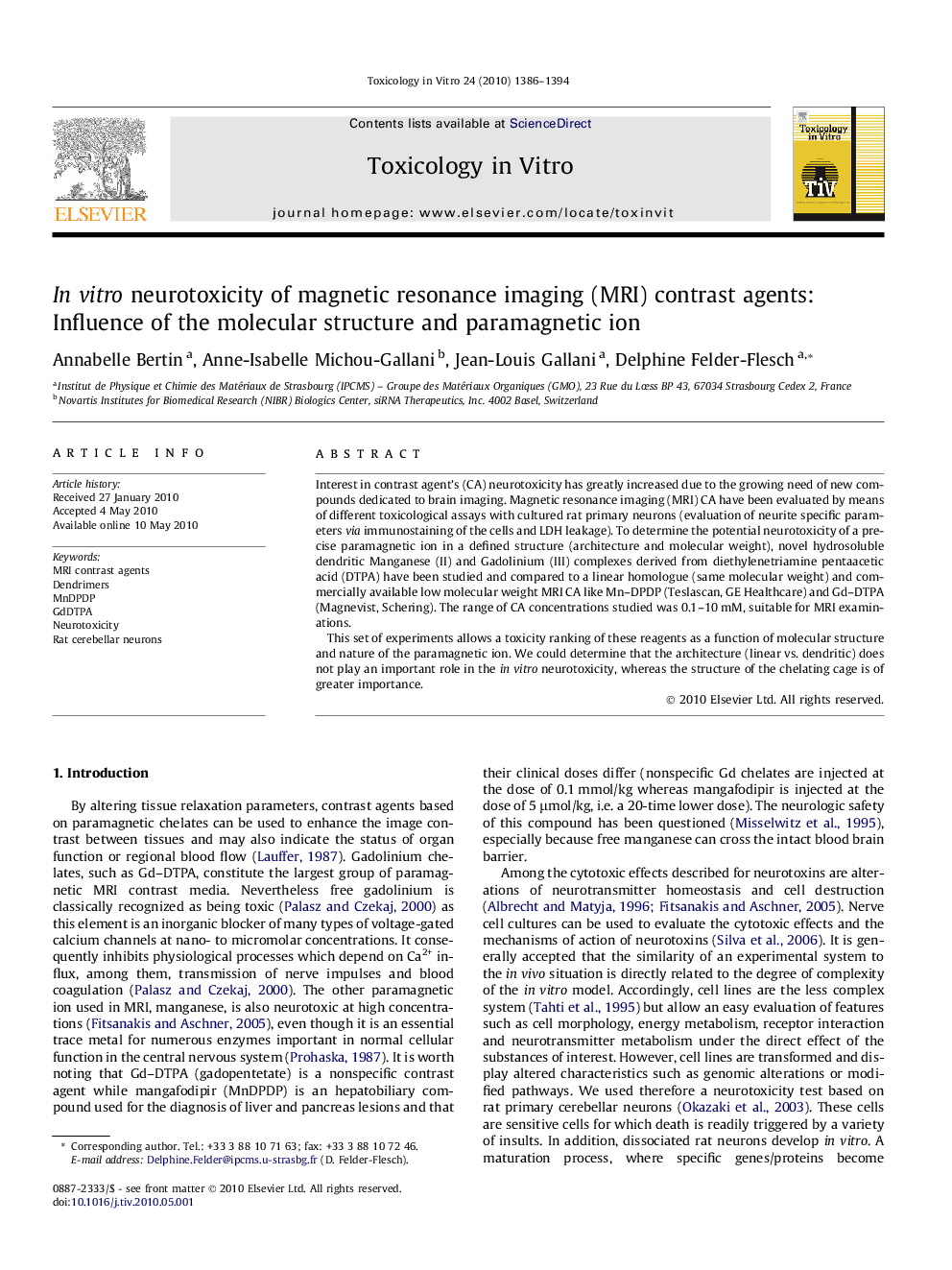| Article ID | Journal | Published Year | Pages | File Type |
|---|---|---|---|---|
| 2603248 | Toxicology in Vitro | 2010 | 9 Pages |
Interest in contrast agent’s (CA) neurotoxicity has greatly increased due to the growing need of new compounds dedicated to brain imaging. Magnetic resonance imaging (MRI) CA have been evaluated by means of different toxicological assays with cultured rat primary neurons (evaluation of neurite specific parameters via immunostaining of the cells and LDH leakage). To determine the potential neurotoxicity of a precise paramagnetic ion in a defined structure (architecture and molecular weight), novel hydrosoluble dendritic Manganese (II) and Gadolinium (III) complexes derived from diethylenetriamine pentaacetic acid (DTPA) have been studied and compared to a linear homologue (same molecular weight) and commercially available low molecular weight MRI CA like Mn–DPDP (Teslascan, GE Healthcare) and Gd–DTPA (Magnevist, Schering). The range of CA concentrations studied was 0.1–10 mM, suitable for MRI examinations.This set of experiments allows a toxicity ranking of these reagents as a function of molecular structure and nature of the paramagnetic ion. We could determine that the architecture (linear vs. dendritic) does not play an important role in the in vitro neurotoxicity, whereas the structure of the chelating cage is of greater importance.
